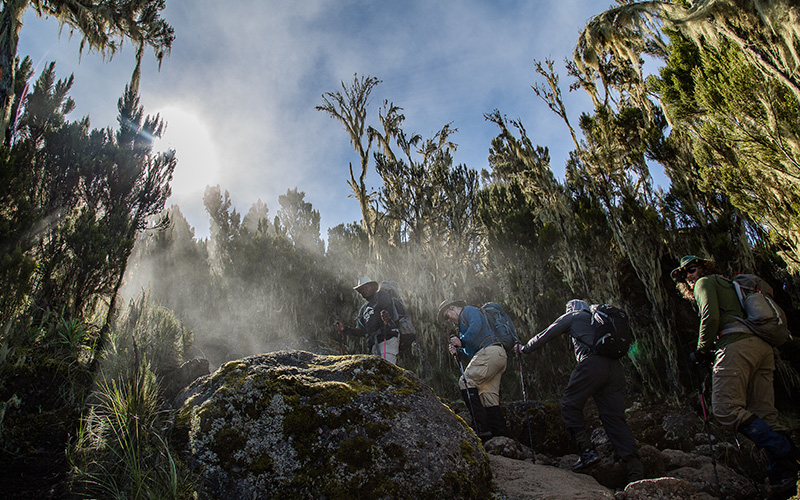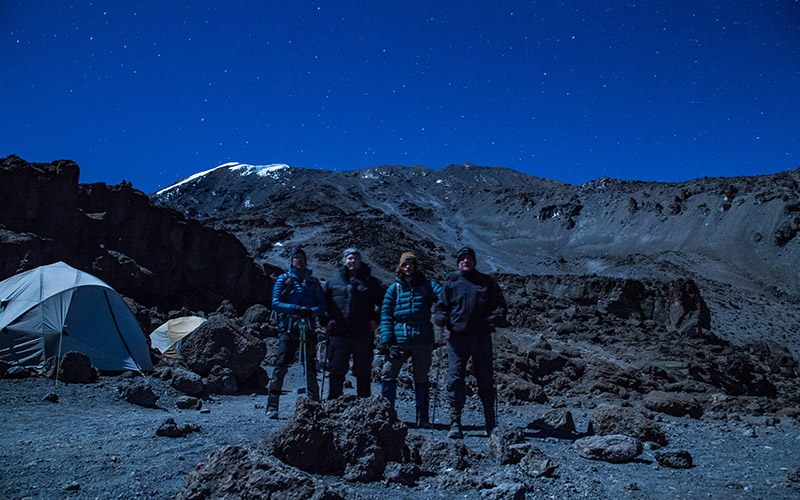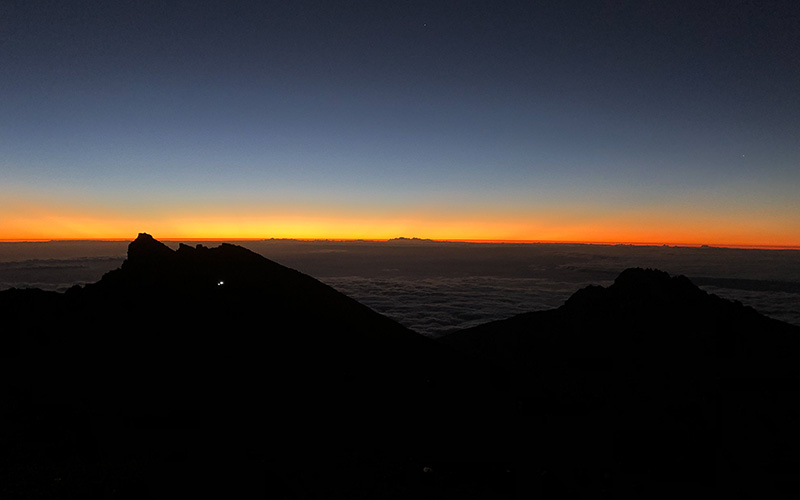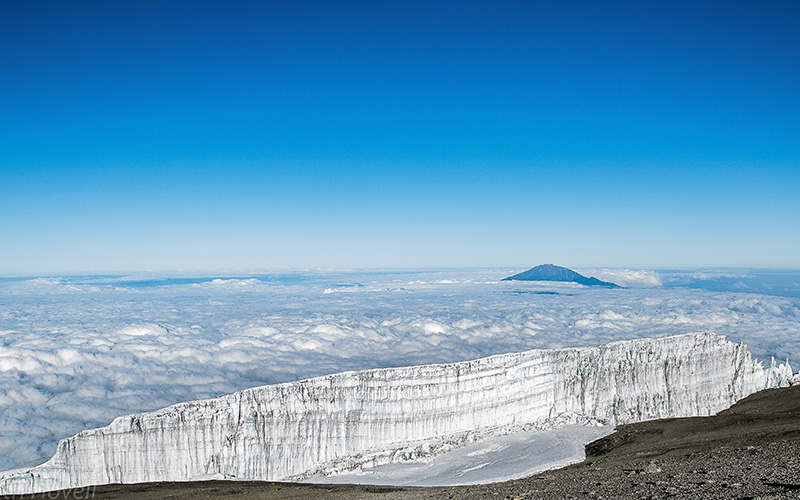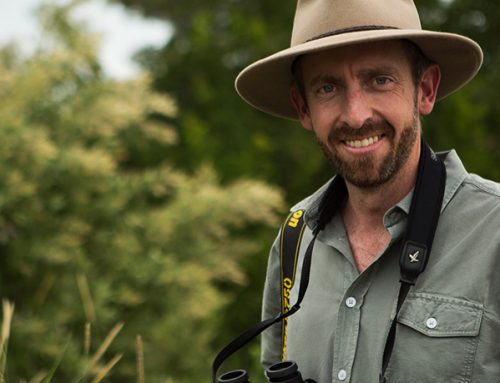The experience of climbing Mount Kilimanjaro (19,340ft) is really a story of two halves. One half is the 20 hour summit day from Barafu Camp (15,239ft) to the summit and back down to Mweka Camp at 10,000ft. The other half is everything else involved in the entire experience from planning and preparation, your training hike on Mount Meru as well as the five days it takes you to reach base camp, to your return to your suite at your luxury boutique lodge in Arusha.
It was interesting to note when I asked my guests at the end of the trip how the actual climb had compared to their preconceived ideas and preparations. All of them agreed that what they had read on the internet was nowhere near the experience they encountered on the mountain.
The various terrains from tropical rainforest to alpine dessert and extreme high altitude all presented their own challenges. Our expedition leader, Dismass Mariki is a master at reading guests’ abilities and adapting the climb to suit our individual physical fitness which proved to be key to our success. Our Abercrombie Kent camps were immaculately set up, and the inclusion of camp cots with pillows, ample sustenance as well as flushing toilets meant that guests were well rested at the start of everyday. Challenges they had thought would be difficult prior to departure, such as reaching Lava Tower on day 3 and negotiating the Barranco Wall at 13,000 ft actually turned out to be highlights compared to the summit day owing to their varied terrains and vistas.
Each person’s summit day is as unique as their finger print depending on their preparation, their ability to deal with altitude sickness and the myriad of different weather conditions that can be experienced at this altitude and in this environment. The only constant is the route, everyone does the same route. To start off with, when you leave Barrafu Camp at 23h30 or midnight, your first obstacle requires an hour of scrambling up a steep rock face with only your headlamp to guide you. This is followed by a short flattish area before you begin the main body of the climb, 3,000ft of scree laden switchbacks dotted intermittently with areas of boulders and rock scrambles where walking poles are abandoned for handholds. This five or six hour period is the toughest, loneliest part of the entire experience and requires absolute mental force to deal with it. At around 05h45 your salvation will come in the form of a faint glimmer on the horizon suggesting the sunrise is near and the crater rim at Stella Point is now achievable. If you reach the sunrise, you reach the summit, that is the power that sunrise gives you to overcome fatigue, the altitude and in some cases despair. From Stella Point to Uhuru Peak is a long and steady incline that should take around 45 minutes to walk. After only about 30 minutes of joyous elation at the summit, the really tough part of your day begins. One must now make it down treacherous scree slopes to arrive at your base camp, pack, eat (in only 45 minutes) and then begin the arduous knee shattering descent 10km and 5,000ft below your base camp. Be warned, when you reach Millennium Camp the cartilage-griding is just about to begin, the path from Millennium Camp to Mweka Camp is only about 3km but consists of excruciating uneven boulder steps. Needless to say, we only arrived in camp after dark and absolutely shattered.
The walk from Mweka Camp to Mweka Gate is a fairly joyous affair. On reaching the gate, Abercrombie Kent guests are greeted with a bottle of French champagne which will most likely be the best you have ever tasted and the one to which all future bottles will be compared!




